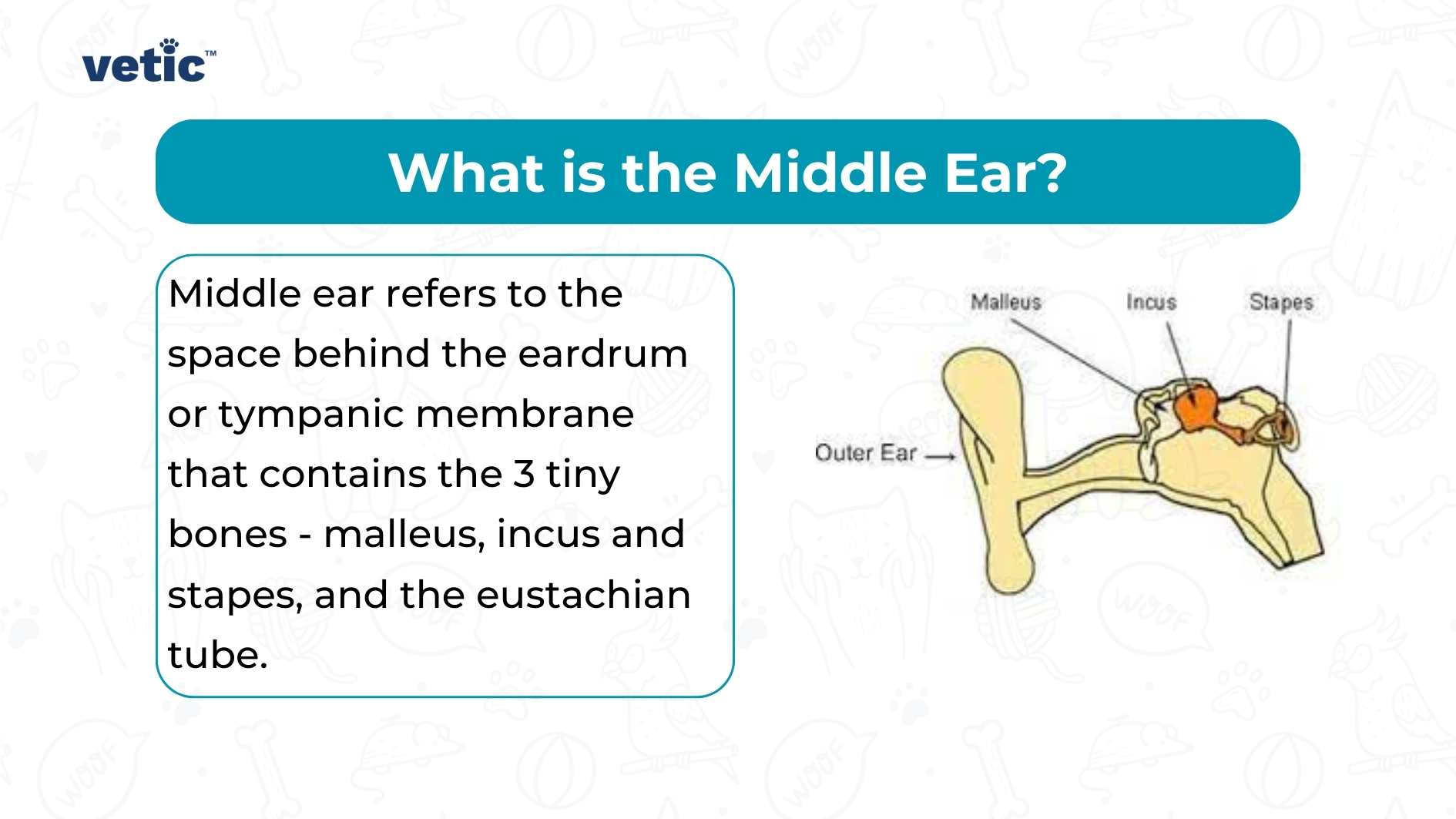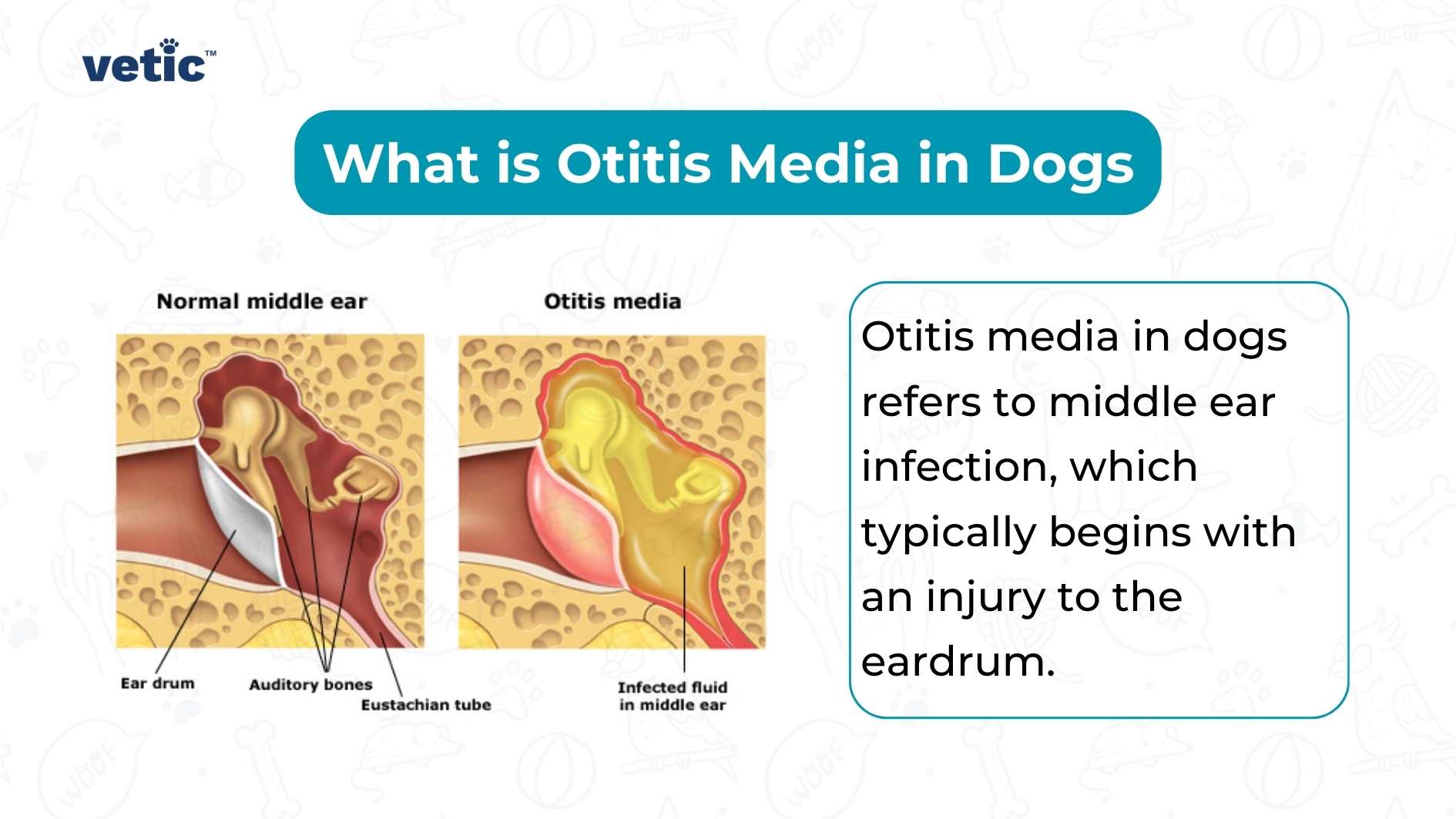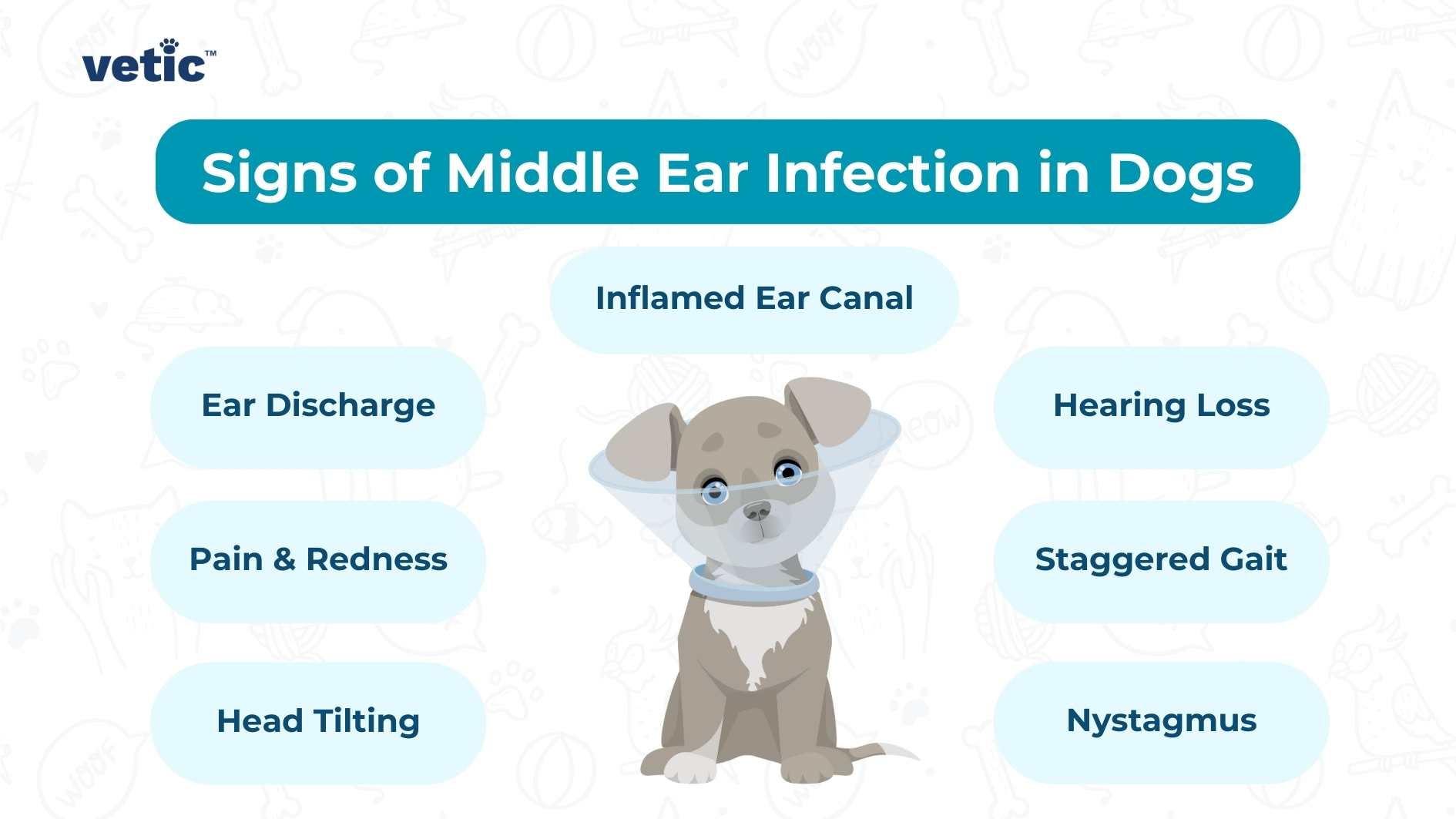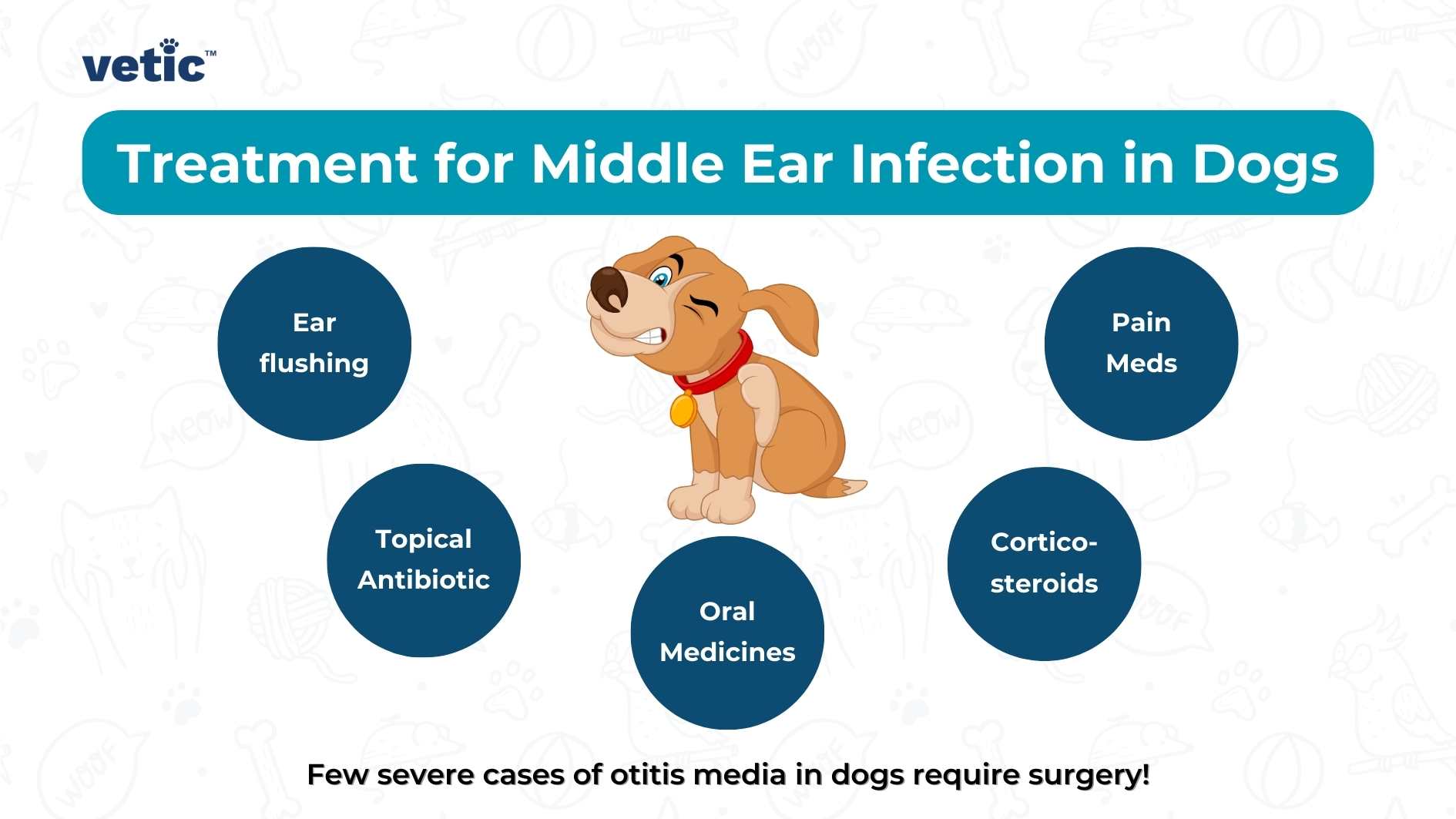What is the Middle Ear?

Middle ear refers to the space behind the eardrum or tympanic membrane that contains the 3 tiny bones – malleus, incus and stapes.
It also contains the eustachian tube, which helps in draining fluid and stabilising the air pressure in the ears.
What is Otitis Media or Middle Ear Infection in Dogs?

Otitis media or middle ear infection commonly begins with an injury to the eardrum. Other ways the eardrum can become ruptured or injured include infection, very loud noises, foreign objects and exposure to toxins.
What Causes Middle Ear Infection?
If you are flying with your pet, remember that sudden changes in the atmospheric pressure can also cause trauma to the eardrums.
When the eardrum is perforated or torn, bacteria and fungi can enter the ear canal from the outside. It results in otitis media or middle ear infection in dogs.
What are the Signs of Middle Ear Infection in Dogs?
A middle ear infection and a ruptured eardrum in dogs may have the same signs since they often overlap.

Here are some common signs of middle ear infection in dogs –
- Thick, pus-like or bloody discharge from the ears
- Loss of hearing
- Inflamed ear canal
- Redness and pain
- Head tilting
- Staggered gait
- Nystagmus
Facial nerve paralysis is not a common sign, but it can occur in dogs whose ear canals have swollen too much and press on the nerves that control the muscles of the face and mouth.
Facial paralysis in dogs can present as the inability to blink or open an eye, drooping of the face and mouth.
How is Middle Ear Infection in Dogs Diagnosed?
A middle ear infection in dogs can only be confirmed by a veterinarian via otoscopy.
If the ear is inflamed, oozing discharge and painful, the veterinarian may recommend a culture and sensitivity test for determining the type of microorganism causing the infection.
Sometimes, the veterinarian may also recommend an X-ray or CT to determine if there’s any involvement of the inner ear as well.
How is Middle Ear Infection in Dogs Treated?

Middle ear infection in dogs needs to be treated rapidly after diagnosis.
Depending on the severity, the veterinarian may complete a thorough ear flushing under sedation.
Topical antibiotics and antibiotic drops are the most common medicines used to treat middle ear infections in dogs.
Sometimes, it is easier to treat middle ear infections with oral antibiotics especially if the dog is in too much pain, uncooperative and aggressive.
Systemic pain medication and corticosteroids may also be prescribed.
Rarely, the vet may recommend surgery for those dogs who have irreversible changes of the outer ear simultaneously as the middle ear infection.
What is the Prognosis of Middle Ear Infection in Dogs?
More than 90% of all dogs with middle ear infection heal without any significant complications after correct and timely treatment.
All dogs will require frequent follow-ups after the ear flushing, meds and/or surgery to ensure zero recurrence of their ear infection.
In few of the cases where the facial nerves were paralysed, the dogs may retain permanent changes to their faces, eyes, lips and even lose their hearing.
That’s why if your dog is showing even the slightest sign of ear infection, you should consult your veterinarian immediately.
